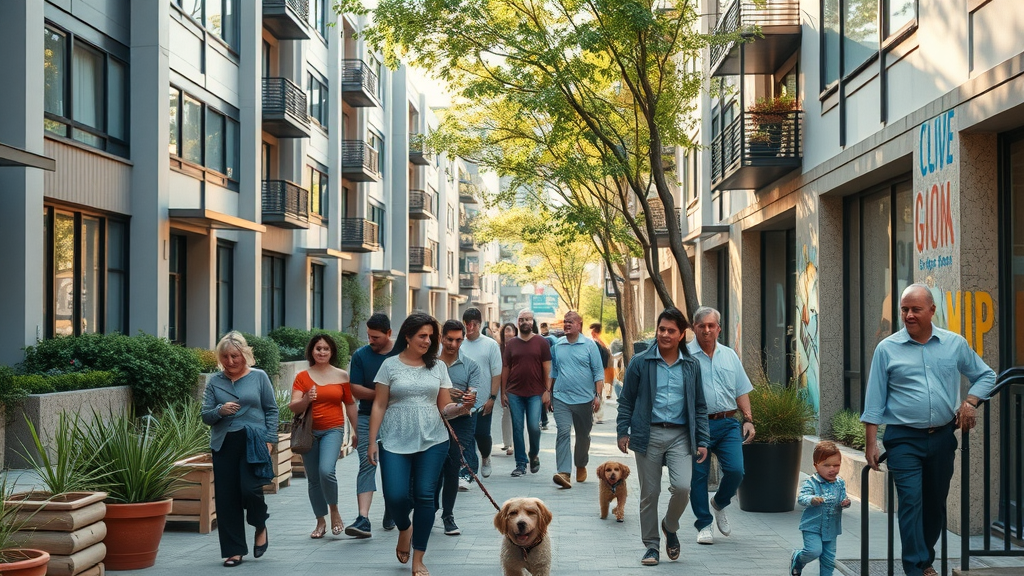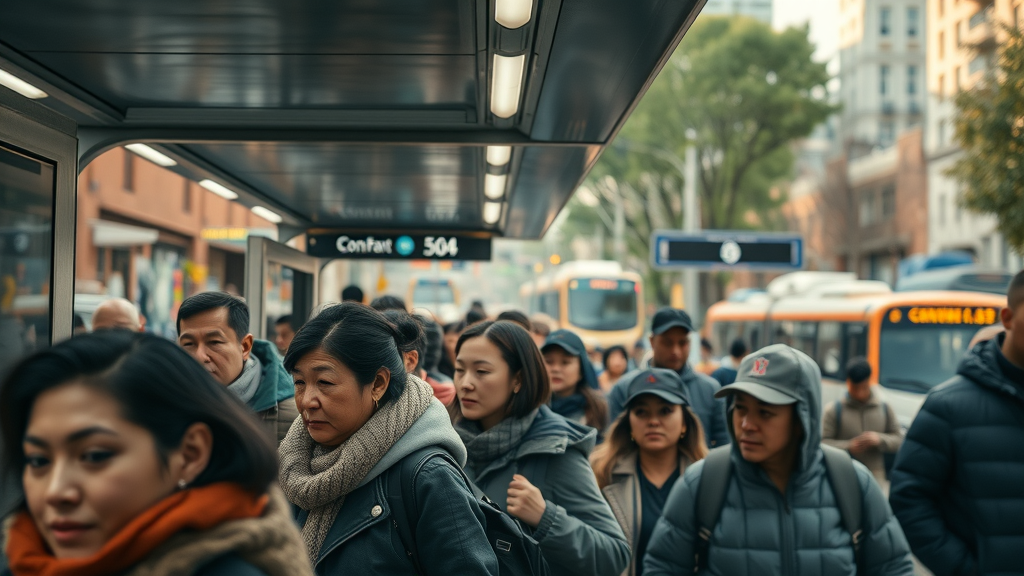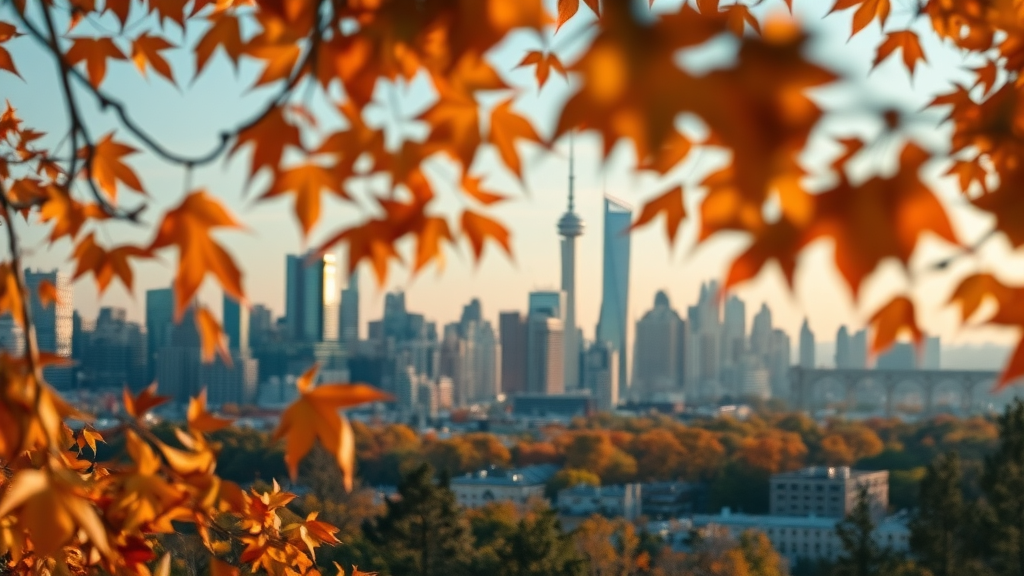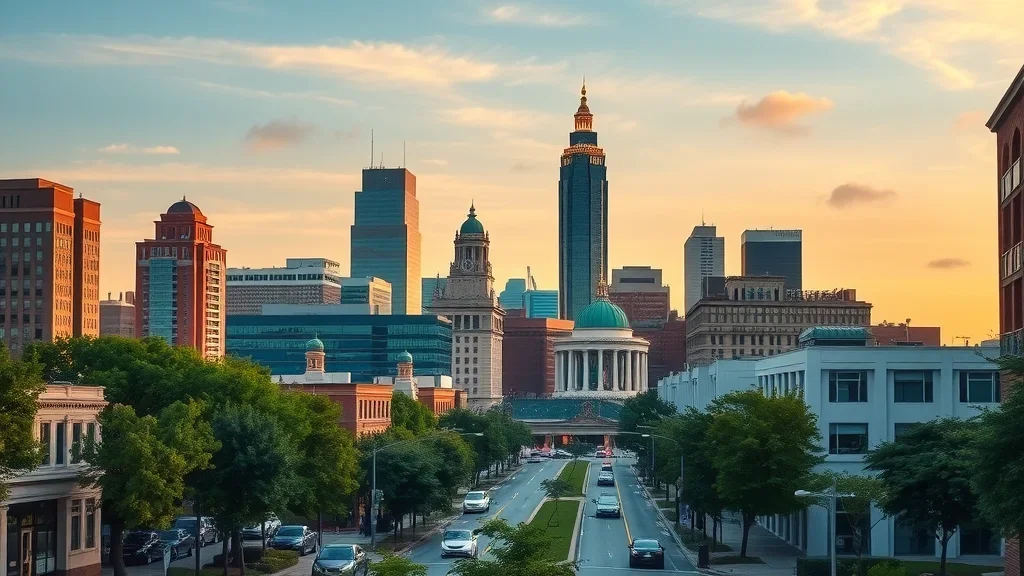Did you know Charlotte’s median rent is almost 20% lower than the national average—yet many of its best neighborhoods offer top-tier amenities, green space, and access to the city’s booming job market? In a world where soaring rents drive residents out of major U.S. cities, Charlotte stands out as a beacon for affordability and vibrant living. Whether you’re a young professional seeking easy access to office hubs, a growing family hoping for good schools, or someone looking for a peaceful community near nature, affordable rent Charlotte neighborhoods provide options for every lifestyle and budget. This guide will reveal the surprising communities where you can thrive in the Queen City—without breaking the bank.A Surprising Truth: Affordable Rent Charlotte Neighborhoods Defy ExpectationsWhen people picture affordable neighborhoods in a rapidly growing city like Charlotte, NC, they often expect compromises—outdated apartments, long commutes, or limited amenities. However, Charlotte’s landscape is proof that this isn’t always the case. Many of the most affordable rent Charlotte neighborhoods offer all the perks you’d expect in trendy areas: green space, retail within walking distance, quality schools, and a strong sense of community. Areas like Providence Crossing, Ballantyne West, and Sardis Woods are testimony that affordable doesn't have to mean lacking.This dynamic is rooted in Charlotte’s unique blend of strong job growth, planned urban development, and community-focused zoning. Neighborhoods in Charlotte are evolving, balancing affordable living with modern amenities, and easy access to main highways and public transportation. By exploring these options, you’ll see why many young professionals and families are relocating from higher-cost metros to take advantage of what the Queen City offers. Affordable rent Charlotte neighborhoods are not just a fallback—they’re becoming the city’s new hotspots.What You’ll Learn About Affordable Rent Charlotte NeighborhoodsThe top affordable rent Charlotte neighborhoods for all lifestylesAverage rent prices, amenities, and what makes each neighborhood stand outTips for finding a cheap apartment or apartment in Charlotte that fits your needsHow neighborhoods in Charlotte compare for young professionals, families, and retireesAffordable Rent in Charlotte: Why the City Attracts Young ProfessionalsCharlotte isn’t just an affordable place to live—it’s a magnet for young professionals eager to balance career growth with quality of life. Many up-and-coming areas in Charlotte offer both budget-friendly monthly rent and immediate proximity to Fortune 500 companies, vibrant nightlife, and green spaces. Thanks to competitive nc rent rates and a cost of living far below similar metros, the Queen City is capturing the attention of talent from coast to coast. For a young professional, an apartment in Charlotte represents more than a roof overhead—it’s a launchpad for lifestyle and career.This shift is clear when comparing rent in Charlotte to neighboring city hubs; lower rents, new construction, and thoughtfully planned transit mean you’re never far from your office, favorite coffee shop, or outdoor trails. These affordable neighborhoods help young professionals sidestep the stress of long commutes and high prices found in places like Atlanta or D.C. Instead, you get access to affordable apartments, top restaurants, and thriving social scenes—all while enjoying parks and easy access to events.As you weigh your options for affordable living, it’s also important to consider how your relationship with your living situation or even your business can impact your overall well-being. For a deeper look at maintaining a healthy balance, explore the signs of codependency in your business life and strategies to overcome them—insights that can be just as valuable when choosing the right neighborhood for your lifestyle."Charlotte’s mix of accessible rent and job growth is unmatched in the Southeast." – Local real estate analystComparing Cheap Apartments and Affordable Neighborhoods in CharlotteWhen searching for a cheap apartment in Charlotte, choosing the right neighborhood can make a major difference in cost, commute, and daily enjoyment. To simplify your search for an apartment in Charlotte, here’s a comparison of three standout affordable neighborhoods. Each offers easy routes to Uptown Charlotte, unique perks, and accessible rents. Whether you’re after serene green space or proximity to business hubs, these choices showcase the diversity of affordable Charlotte neighborhoods.NeighborhoodAverage Rent (1-BR)Main PerksNearby Zip CodesProvidence Crossing$1,100Great schools, parks28277Ballantyne West$1,150Business hubs, shopping28277Sardis Woods$975Nature trails, quiet28270Neighborhoods in Charlotte: Affordable Options for Every LifestyleProvidence Crossing: A Gem Among Affordable Rent Charlotte NeighborhoodsProvidence Crossing has carved a reputation as one of the most desirable yet affordable rent Charlotte neighborhoods—particularly attractive for families and those seeking tranquility without sacrificing city amenities. The neighborhood is renowned for its excellent schools, lush parks like McAlpine Creek Regional Park, and a residential atmosphere that feels welcoming and safe. The average monthly rent for a one-bedroom hovers around $1,100, meaning residents enjoy high value, green space, and convenience all in one package.Central to its charm is the variety of modern apartment complexes interspersed with inviting single-family homes, well-kept sidewalks, and access to essential amenities. The surrounding area is dotted with playgrounds, and local shopping centers, making it easy for residents—especially families with school-age children or retirees seeking community—to settle in. The neighborhood’s zip code (28277) ranks high for both safety and proximity to Charlotte’s bustling city center, proving you don’t have to compromise on location or lifestyle to secure an affordable Charlotte neighborhood.Ballantyne West: Affordable Neighborhoods for Young ProfessionalsBursting with youthful energy and modern conveniences, Ballantyne West stands out among affordable neighborhoods in Charlotte for young professionals. This area combines newly built apartments, bustling retail centers, and easy access to business parks—making it a one-stop destination for work and play. The average rent here is around $1,150 for a one-bedroom, but the amenities, eateries, and recreational spots deliver serious value for every dollar spent.Residents of Ballantyne West enjoy vibrant nightlife, top-tier gyms, a variety of boutique shops, and casual eateries. Its convenient location means a quick commute to Uptown Charlotte or the South End, and the zip code 28277 consistently ranks as one of the city’s most in-demand areas for career-driven individuals. Whether you’re grabbing coffee before work or cycling through lush pathways after hours, this affordable Charlotte neighborhood offers more than a cheap apartment—it’s a lifestyle upgrade.Sardis Woods: Cheap Apartments Surrounded by NatureFor those seeking cheap apartments close to the calming embrace of nature, Sardis Woods is a hidden treasure. Located southeast of Charlotte’s urban core, this residential neighborhood feels like an oasis—with leafy walking trails, abundant birdsong, and rent for one-bedroom units averaging just $975. It’s an ideal place to live for anyone who values peace and green space without forgoing a quick drive to the city’s excitement.Sardis Woods is popular among singles, retirees, and families who cherish outdoor recreation. The proximity to McAlpine Creek and easy access to greenways make morning jogs or weekend hikes a regular part of daily life. While the vibe is serene, helpful amenities like nearby shopping and good schools cater to modern needs, making it a top spot if you want affordable rent charlotte neighborhoods with nature at your doorstep.Zip Code Insights: Finding Affordable Apartments in Charlotte, NCWhen navigating affordable Charlotte neighborhoods, understanding zip code trends is crucial. For instance, 28277 encompasses both Providence Crossing and Ballantyne West, offering renters access to top amenities and safe, well-kept neighborhoods without the sky-high prices of Uptown Charlotte. Similarly, Sardis Woods is defined by zip code 28270, an area known for quiet residential neighborhoods and family-friendly features. By cross-referencing your priorities—such as cost of living, green space, and school ratings—with a zip code, you can zero in on the perfect apartment in Charlotte that suits your needs and budget.Charlotte offers a wide variety of neighborhoods in different zip codes, from established suburbs like Providence Crossing to trendy spots like Plaza Midwood (28205). Each area has its personality, monthly rent range, and advantages. Focusing your search by zip code helps you find the best cheap apartments or hidden-gem communities for your lifestyle, whether you prioritize commutes, access to green space, or a particular school district.How to Find Cheap Apartments in Charlotte’s Most Affordable Rent NeighborhoodsUtilize apartment finder platforms for up-to-date dealsCheck local social media and neighborhood groupsTour apartments during off-peak rental seasonsFinding cheap apartments in Charlotte doesn’t just come down to a Google search. Apartment finder platforms are excellent for comparing prices, but local social media groups often share deals before they’re listed widely. Networking with current residents and landlords through neighborhood groups can unlock off-market opportunities, while scheduling tours in slower seasons (late fall or winter) can give you leverage on monthly rent rates. Staying flexible and open to various Charlotte neighborhoods increases your chances of landing a below-market deal—especially when searching in popular zip codes known for affordable rent Charlotte neighborhoods.People Also Ask About Affordable Rent Charlotte NeighborhoodsWhat is the cheapest area to live around Charlotte, NC?The cheapest area to live around Charlotte, NC is often Sardis Woods (zip code 28270), which stands out for its $975 average rent for a one-bedroom apartment. Areas like East Charlotte and neighborhoods near Sugar Creek also traditionally offer some of the most affordable monthly rent in the city—ideal if you’re seeking a cheap apartment with decent access to amenities and public transportation.What parts of Charlotte are considered low income areas?Historically, areas in North Charlotte such as Hidden Valley and portions of East Charlotte have had lower median incomes compared to more affluent spots like South Charlotte or Ballantyne West. However, many of these communities are experiencing new investments, and affordable housing complexes in these zones offer a wide range of affordable apartment options for students, low-income families, and retirees.What salary is needed to live comfortably in Charlotte, NC?To live comfortably in Charlotte, NC—including rent, utilities, transportation, and leisure—a typical single renter should aim for an annual pre-tax income of $45,000 to $60,000. This range makes it easy to afford a decent apartment in Charlotte and still have discretionary income. For families, the comfort threshold increases to $70,000–$90,000, depending on housing choice and desired neighborhood amenities.What side of Charlotte is best to live on?The best side of Charlotte to live on depends on your lifestyle and preferences. South Charlotte—home to Providence Crossing and Ballantyne West—boasts strong schools, low crime rates, and high-quality amenities, making it ideal for families and young professionals. East Charlotte is often the most affordable, while North Charlotte provides a mix of affordability and access to future job hubs. Each area has affordable rent Charlotte neighborhoods with distinct personalities and perks.What Makes a Place to Live 'Affordable' in Charlotte?Rent in Charlotte: Trends and Tips for Affordable NeighborhoodsUnderstanding what makes a place to live “affordable” goes beyond just the sticker price of monthly rent. In Charlotte, affordable neighborhoods balance rent in Charlotte below the U.S. single-family average (around $1,200 for a one-bedroom), easy access to schools and shopping, and community amenities—from green space to public transit. Trends show that as more people relocate to North Carolina, affordable Charlotte neighborhoods are quick to fill, driving up prices in some areas while leaving hidden gems for savvy renters.For those searching for an affordable apartment in Charlotte, it’s wise to act early, research the local middle school zoning, and calculate the broader cost of living—including utilities and commute costs. Consider touring a variety of options, from modern apartments in Providence Crossing to eco-friendly complexes in Sardis Woods. Asking leasing agents about specials, move-in incentives, or upcoming vacancies can also yield significant savings, ensuring your place to live truly offers the best value in affordable Charlotte neighborhoods.Key Takeaways: Affordable Rent Charlotte NeighborhoodsCharlotte has multiple affordable neighborhoods with rents below the U.S. medianYoung professionals and families benefit from accessible amenitiesStrategic neighborhood choice can offer the most value for your budgetFAQ: Affordable Rent Charlotte NeighborhoodsHow do I know if a neighborhood in Charlotte is safe and affordable?Research crime statistics, review school ratings, and connect with current residents online to get firsthand insights about safety and cost in Charlotte neighborhoods. Apartment review websites and local forums often provide up-to-date information on neighborhood security and rent trends.Are there affordable rent options for students in Charlotte?Absolutely—many neighborhoods near UNC Charlotte and Central Piedmont Community College offer cheap apartments in student-friendly communities, with public transit access and flexible lease terms.Which neighborhoods have the best access to public transportation?Neighborhoods like Plaza Midwood, Uptown Charlotte, and portions of Ballantyne West feature convenient bus lines and light rail stations, making it easy for residents to commute without a car.Ready to Find Your Next Apartment in an Affordable Charlotte Neighborhood?Boost your property's visibility and attract more tenants! Subscribe to Apartment Neighborhoods News for insider updates, deals, and rental guides in affordable rent Charlotte neighborhoods.If you’re inspired to make a move or simply want to optimize your living situation, remember that finding the right neighborhood is just one piece of the puzzle. Building a healthy relationship with your work and home life can be transformative, especially in a city as dynamic as Charlotte. For those interested in personal growth and sustainable success, take the next step by learning how to recognize and overcome hidden struggles that may be holding you back—whether in your business or your daily routine. Discover practical strategies and deeper insights in this guide to understanding codependency and achieving balance. Your journey to a more fulfilling lifestyle in Charlotte starts with the right knowledge and a willingness to explore new possibilities.Exploring affordable rent options in Charlotte reveals several neighborhoods that combine cost-effectiveness with desirable amenities. For instance, Windsor Park offers an average rent of $1,374 and is known for its strong community spirit and proximity to parks, making it ideal for families and young professionals. (rentcafe.com) Similarly, Starmount provides affordable housing with an average rent of $1,382, excellent connectivity to major highways, and a family-friendly atmosphere. (rentcafe.com) Additionally, Sardis Woods stands out with an average rent of $1,261, offering residents access to parks like James Boyce Park and McAlpine Creek Park, which feature playgrounds, picnic areas, and a dog park. (extraspace.com)For those seeking affordable living options, these neighborhoods provide a blend of affordability, community engagement, and convenient access to Charlotte’s amenities.




 Add Row
Add Row  Add
Add 




Write A Comment